At 6:19 pm on January 19, 2019, the third time Sanjiangyuan and the second time Zhuonai Lake expedition team returned smoothly, leaving the no man's land of Hoh Xil and arriving near the Qinghai-Tibet Highway. The first time the mobile phone had a signal, the expedition team sent a message from the front line: We are out!
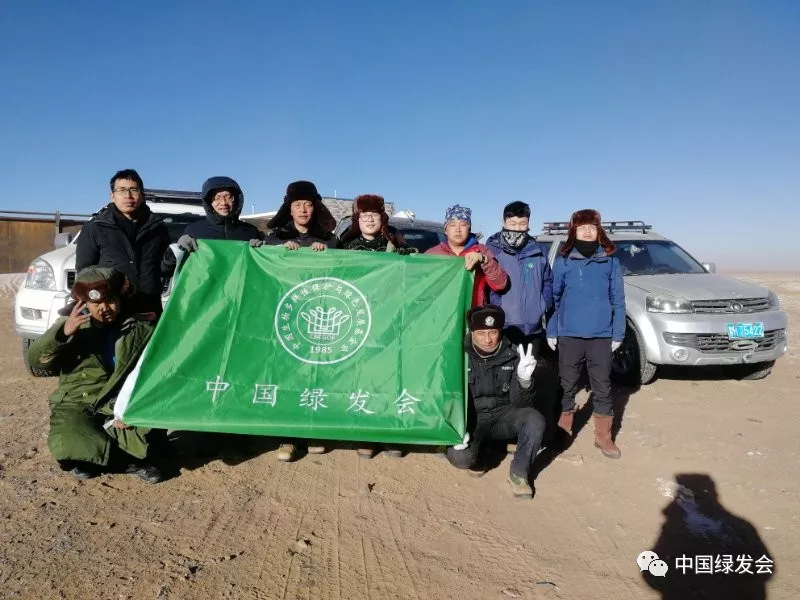
On the 19th, the scientific expedition was over. Everyone was taking a photo in front of the Zhuonai Lake Protection Station before preparing to return.
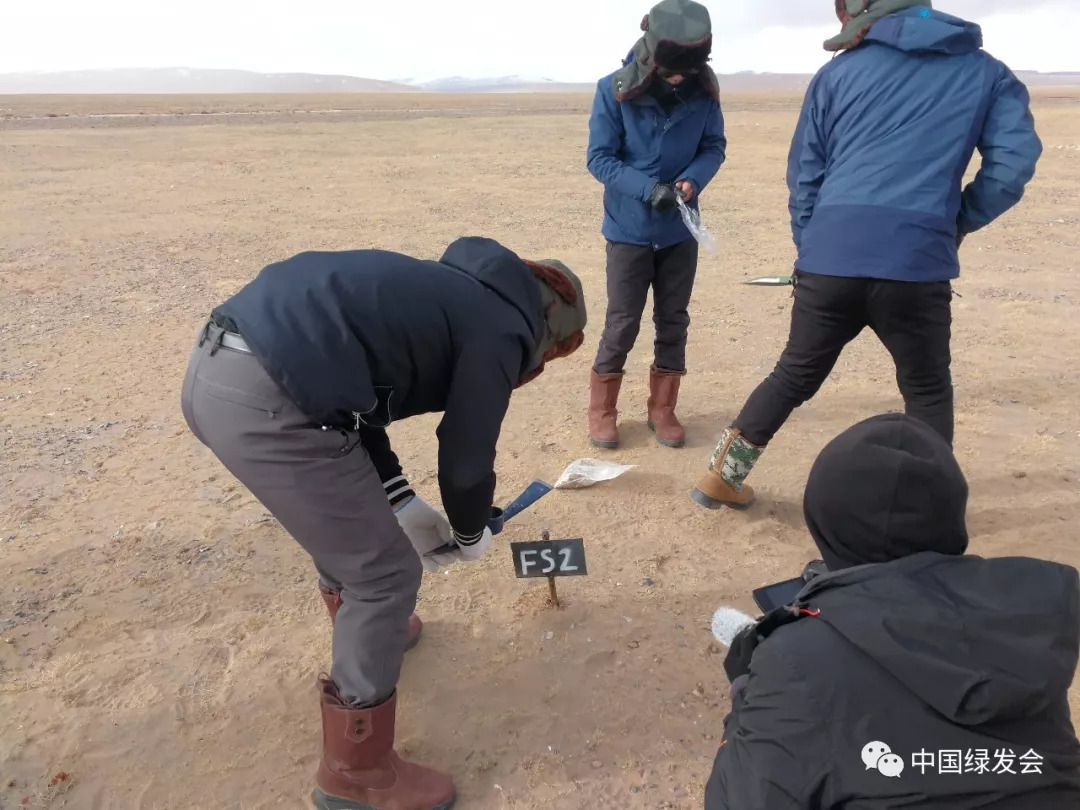
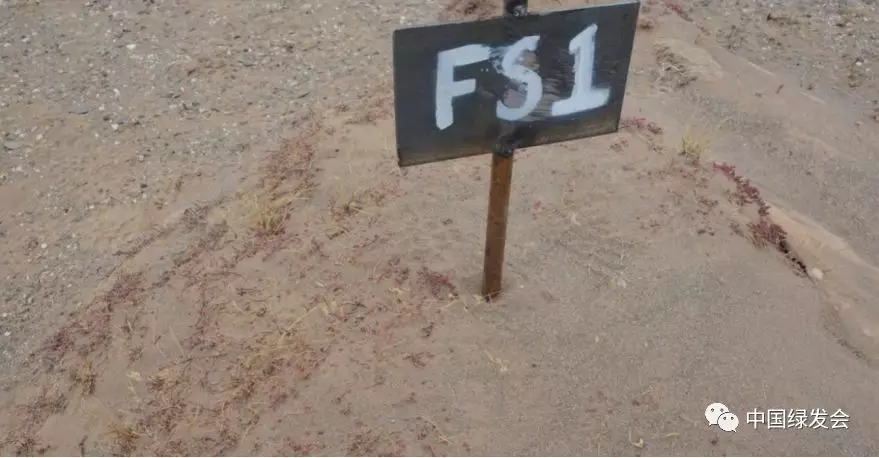
Accumulation of wind and sand formed 60 kilometers downstream of Zhuonai Lake.

Moving sand dunes appearing 20 kilometers downstream of Zhuonai Lake.
The weather on the day was also very good. Dr. Lu, the head of the expedition team, said:“In the slight snow, under the sun, the work of the scientific expedition of the Hoh Xil Zhuonai Lake basin lasted for four days and three nights, has finished smoothly.”according to the preliminary summary of the expedition team: this scientific expedition’s journey is through the entire Zhuonai Lake basin, obtained a total more than 50 soil, water and plant samples, selected an determined five sandstorm observation sections, arranged sand dust sampling sample covering nets 1000 square meters, took 300+G of photos and video materials, fully completed various scientific expedition tasks. After field visits, the expedition team finally confirmed that the sandstorm in the water-removing area of the Zhounai Lake is far worse than expected!
This time’s expedition team is jointly formed by CBCGDF and the Aerospace Information Research Institute of Chinese Academy of Sciences. It is the third time of Sanjiangyuan scientific expedition and the second time into the Zhuonai Lake Basin, since CBCGDF signed a strategic cooperation agreement with Sanjiangyuan National Park Administration on the cooperation on environmental protection in Sanjiangyuan in 2018.
The scientific expedition team lost contact at 10 am on January 16 after entering the no man's land. What kind of test is going to be carried out during a scientific expedition in a no man's land?
The most serious is the altitude sickness. The locals are still good, but for those who go from the field to the hinterland of the plateau, there will be headaches without exception. Everyone will react differently depending on their physical fitness. CBCGDF's team member said that in the days of Zhuonai Lake’s expedition, almost all of the team members were doing their work on the basis of overcoming the altitude sickness. Other tests included sandstorms with squally winds 3-4 times a day, and severe cold of minus 20 degrees.
A senior cadre who assisted Tibet for more than 20 years in Shigatse, Tibet, showed great admiration after learning the expedition team’s going deep into the Tibetan Plateau in the winter. “The altitude is too high, it’s easy to have altitude sickness, and it’s particularly cold. You don’t feel oxygen is enough even don’t do any movement, not to mention to work hard with effort. Living there is also difficult, hard to boil water since the boiling point is not enough. You have to boil it repeatedly.” The cadre said that he has been walking in Tibet for so many years and rarely entered the area. According to the field survey of the scientific expedition, the elevation of the Zhuonai Lake Basin is nearly 5,000 meters.
Although no member of the team deliberately talked about how to deal with the challenges of the external environment during the entire scientific expedition and did not talk about the hardships of life and the bumps of the road. What they recorded was only the state of the daily scientific expedition mission. But from this we can see these team members’ devoting spirit in science. To this end, in particular, the four days and three nights of scientific investigations in the no man's land have been sorted out to readers.
The first day (16th): The door of the base board room has been completely blocked by the sand dunes.
After more than 10 hours of bumps and trek, the Zhuonai Lake expedition team successfully arrived at the Zhuonai Lake Ecological Protection Station. After careful observation and measurement of the wind and sand conditions along the line, the team realized that the impact of the sandstorm on the Zhuonai Lake water-removing area was far more serious than we thought!
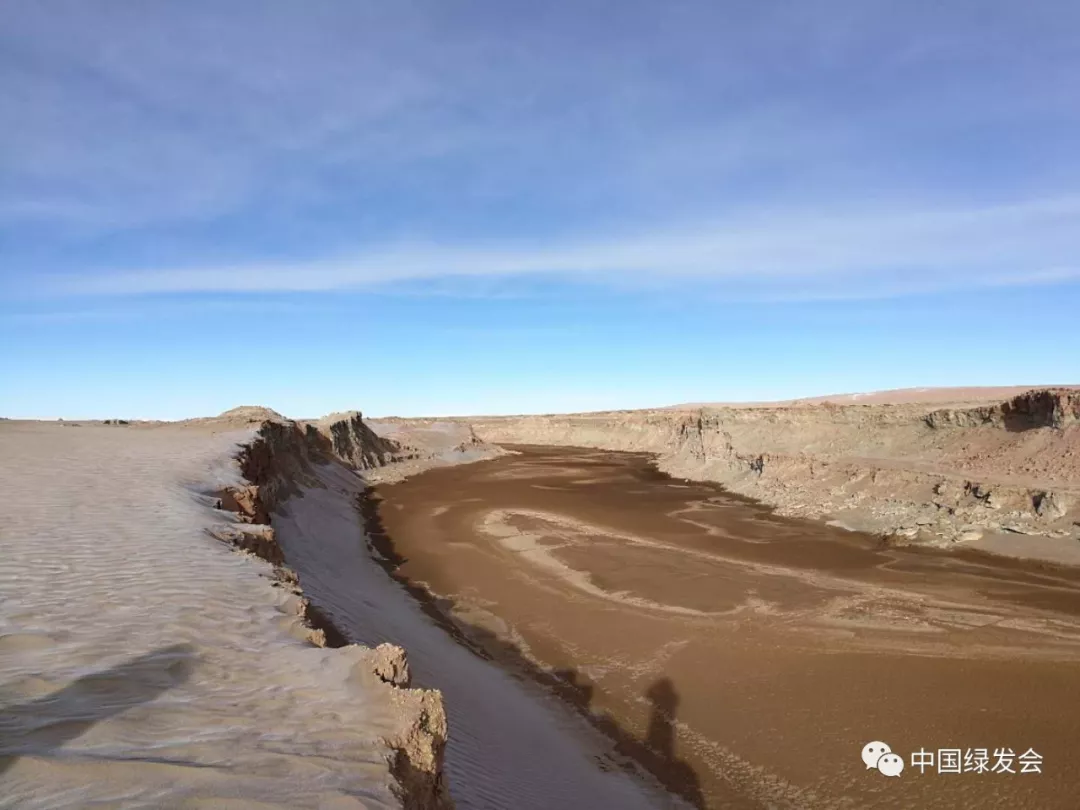
On the mountain ridge 100 km from Zhuonai Lake, the team saw obvious dust accumulation. The vehicle continues to drive towards Zhuonai Lake, and the situation is getting worse. On the bank of the river 30 kilometers east of the embankment, 10 cm of dust accumulation can be seen, and on the steep river wall formed by the dam collapse accident, a large number of small sand dunes have been formed. Gradually, it went deep into the north and found that there were obvious moving sand dunes near the small lake on the south bank of the Zhuonai Lake water-removing area. The dust accumulation was 20 cm thick.

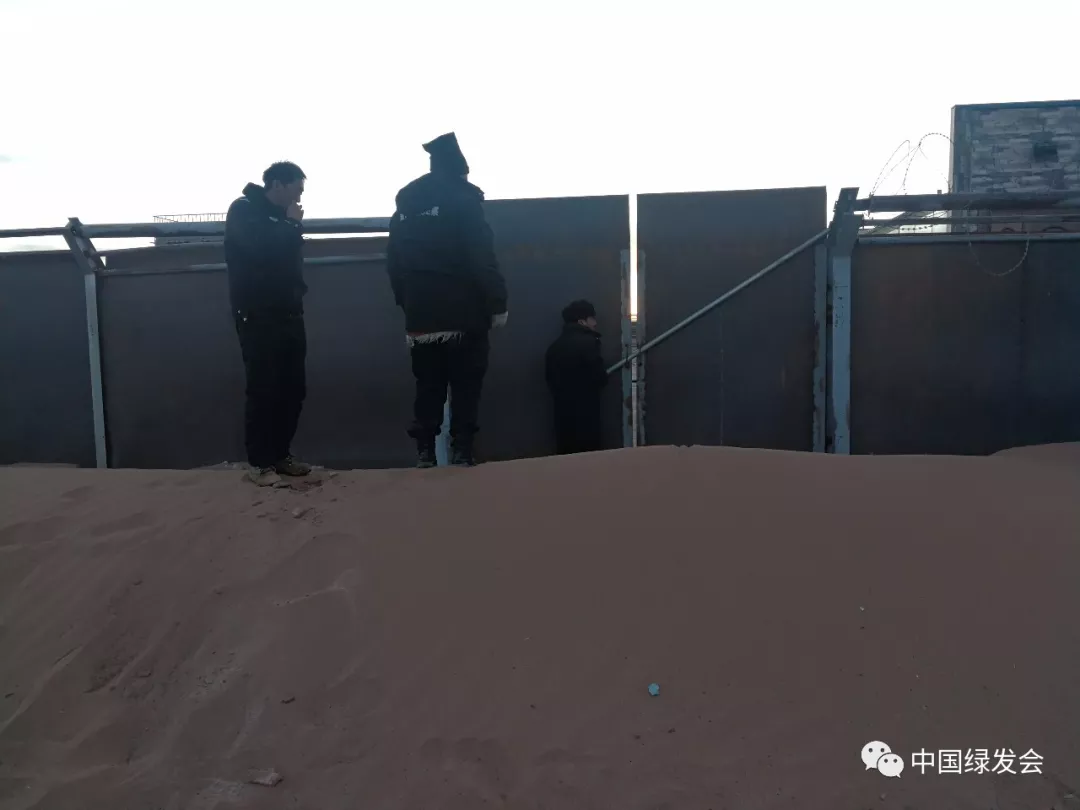
When the expedition team finally drove to the scientific base on the south bank of Zhuonai Lake, it was still shocked by the scene: the door of the base board room has been blocked by the sand dunes up to 70-80 cm! Nima Tashi said that just over a month has accumulated so much. It’s getting late during the day (around 7:30 in the evening), and the team members are faced with cleaning the dust, power generation, digging ice and boiling water, cooking, organizing the work during the day, and arranging the work of the next day. .....
The next day (17th): the dust storm raged, and all the sand-proof covering nets were rolled up.
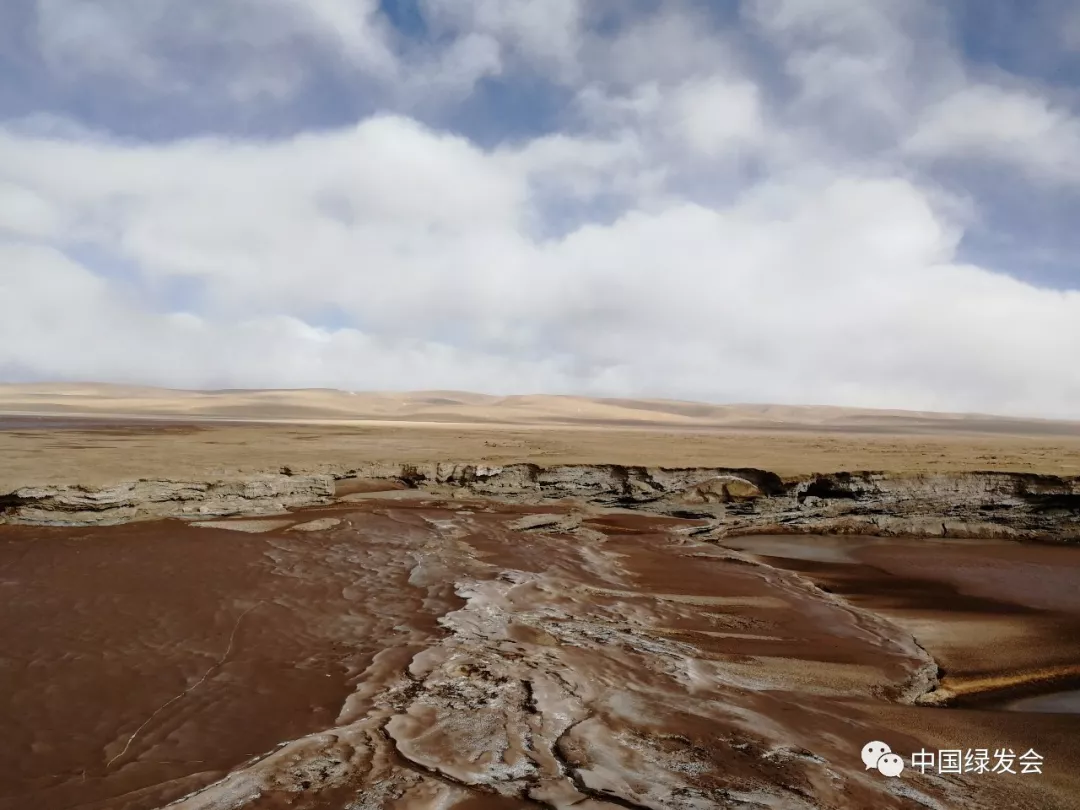

In the morning, everybody went to the water-removing area at the southwest corner of Zhuonai Lake to install sandstorm proof covering nets. Before 10:30, the sky was particularly beautiful, with breeze and bright sunshine. All the team members acted together, and soon a strip of sandstorm proof covering nets was fixed and arranged according to plan. However, when everyone worked hard and was sitting on the nets for a short break, starting from 12:30, the wind smashed, and many sandstorm proofs covering nets that have been fixed have been rolled up. Everyone had to hurry and fix it again. But the ruthless winds obviously didn’t pay attention to everyone’s hard work. Then, the wind blew up the sand of the water-removing area, and the sand was violent. The 7-8 level winds smashed the dust and forced everyone into the vehicle.
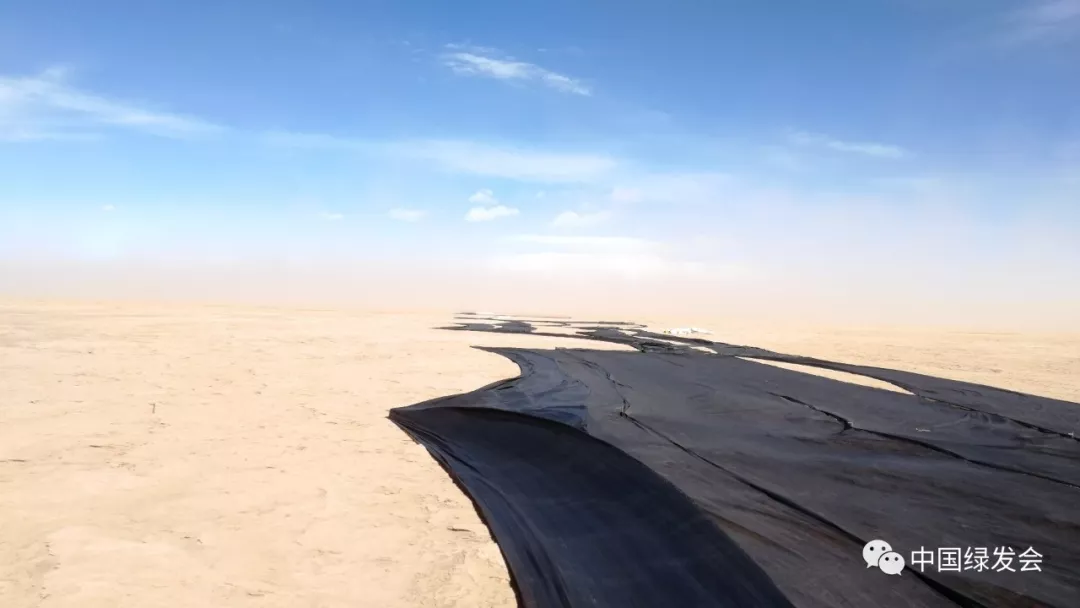
The wind and sand have been scraping for more than an hour and has not stopped. In order not to delay work, the team is divided into two groups, one group stays at the nets spot, to clean and repair the covering nets when the weather conditions are appropriate. Another group collected samples of land along the lakeshore. When the team members traveled to the lake by driving, the scene of desertification became more and more obvious: the moving sand, the stacked sand dunes, the wind-destroyed lake bed crust... all the things, it is hard to believe that this is working along the lakes of the plateau. While the team members were shocked by the raging wind, they also expressed deep concern about the ecological environment in the lower reaches of Zhuonai Lake.

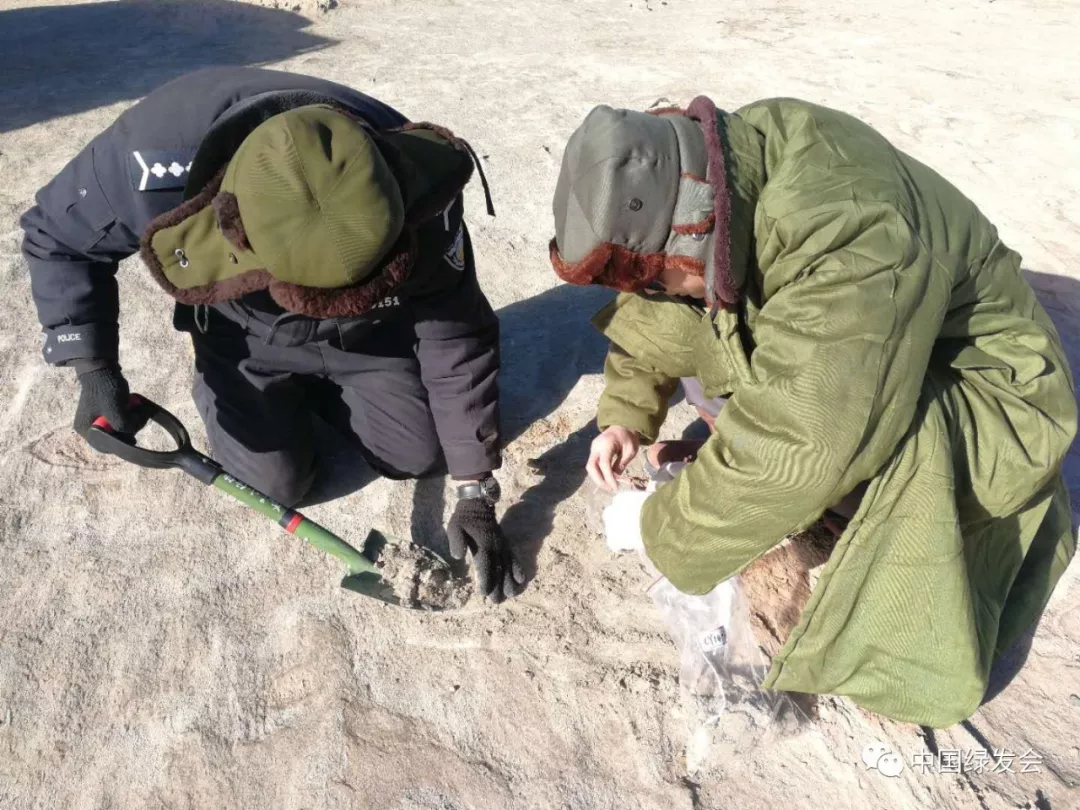
In the afternoon, the wind and sand were still raging. The team members could not continue to work on the lakeshore. The nets covering work could only be suspended. Only some mossy lichens and cold-tolerant plant samples were collected near the protection station.

Day 3 (18th): Crossing the storm eye, fish was found in the Zhuonai Lake for the first time? !
In order to improve work efficiency, the expedition team was divided into two groups on the same day. One group went to the nets covering experimental area to repair and complete the laying of the net samples. One group went to the dam collapse mouth of Zhuonai Lake for an assessment of the feasibility of the project and obtained soil samples along the route.
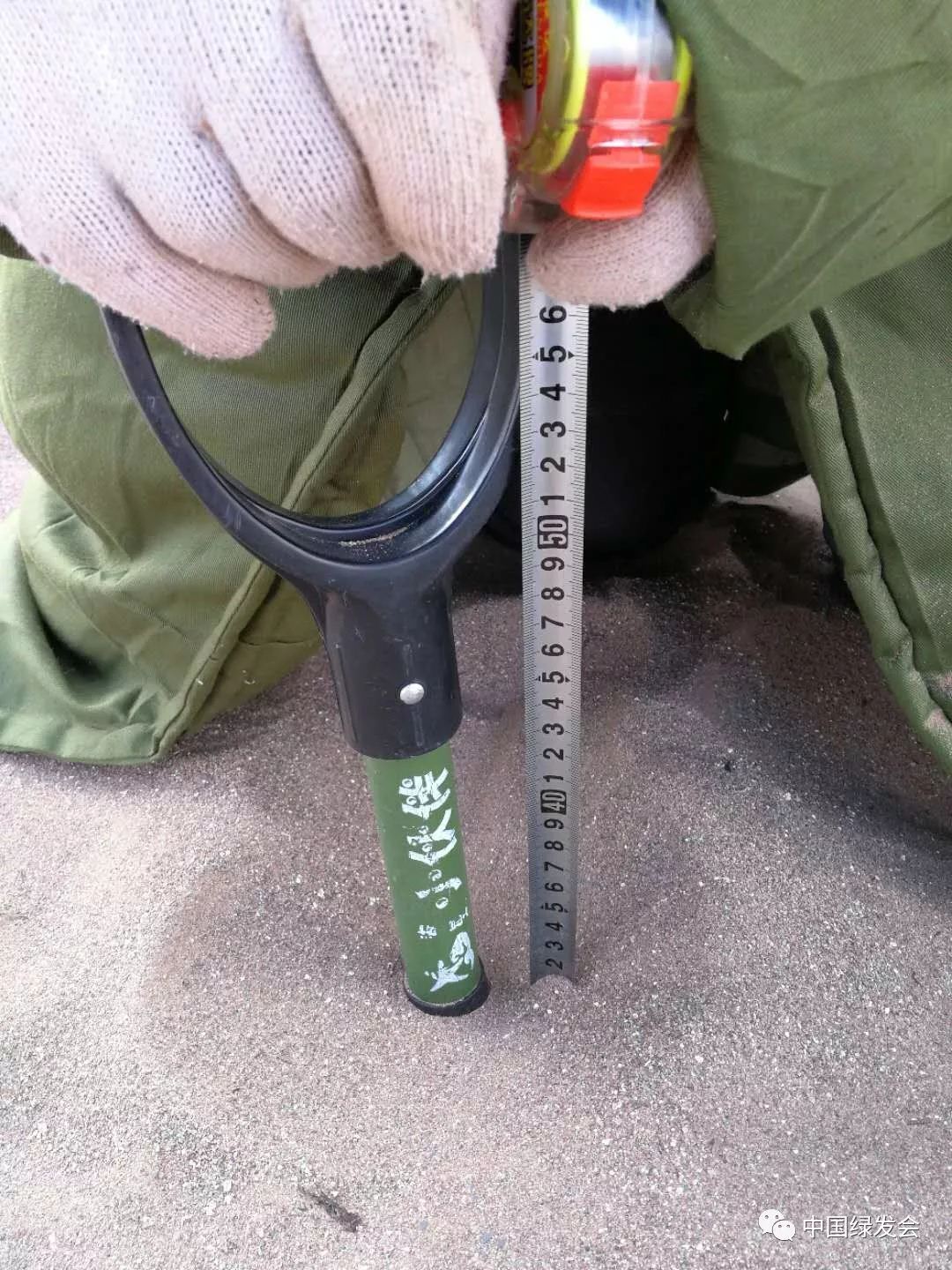
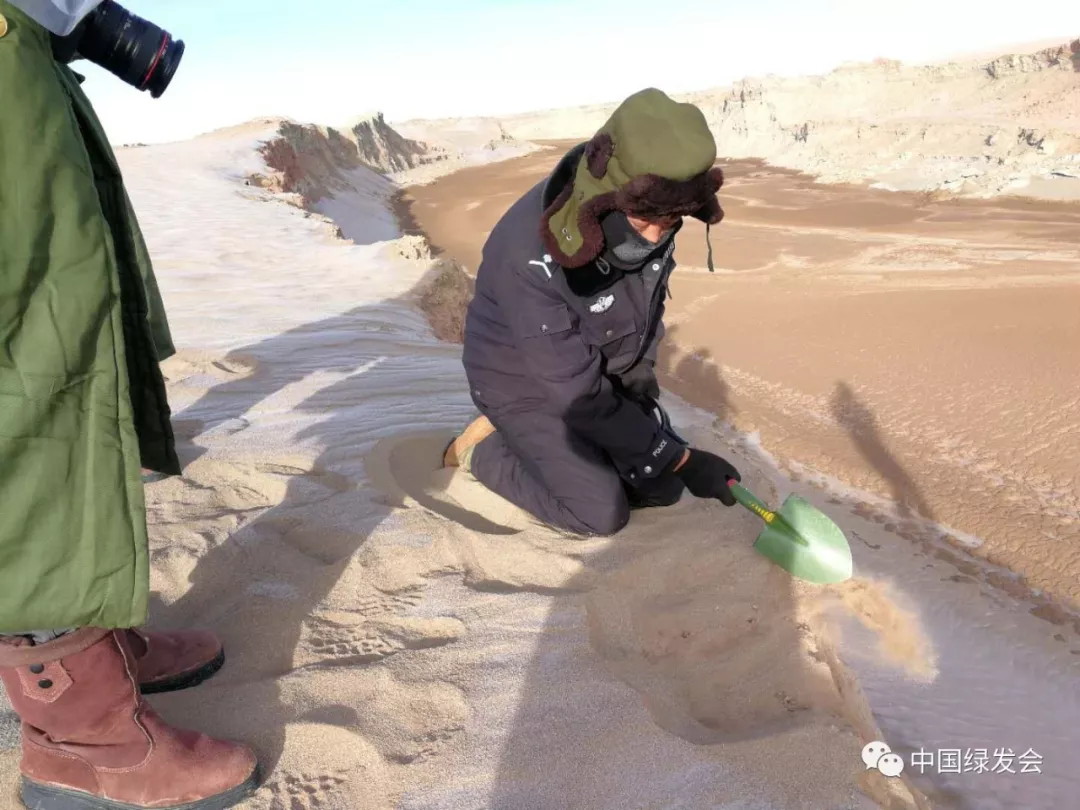
The first group adjusted the working method. In the morning, it took 3 hours to finish the layout of 1000 square meters of covering nets samples and withstood the challenge of the 7-8 level winds that started at noon.


The second group went upstream from the vicinity of the mouth of the dam collapse of Zhuonai Lake in 2011 and finally obtained soil samples from different lake bases. A sample of water was taken from the drain at the outlet of Zhuonai Lake, and more than 10 dead fish were found. According to the leader of the protected area authority, Nima Tashi, this is the first time in 18 years of patrol work to find fish in the waters of Zhuonai lake. He was particularly excited, regardless of the ice surface of more than 20 degrees, took off his shirt, squatted on the ice with his arms, and fished out two fish as specimens. In just a few tens of seconds, after fishing, his snow cap and half of jacket were instantly wetted by the overflowing ice water and frozen. Colleagues all lamented the professionalism of him. He suggested that one should be collected by the protected area authority as a specimen and the other as a research sample for CBCGDF.
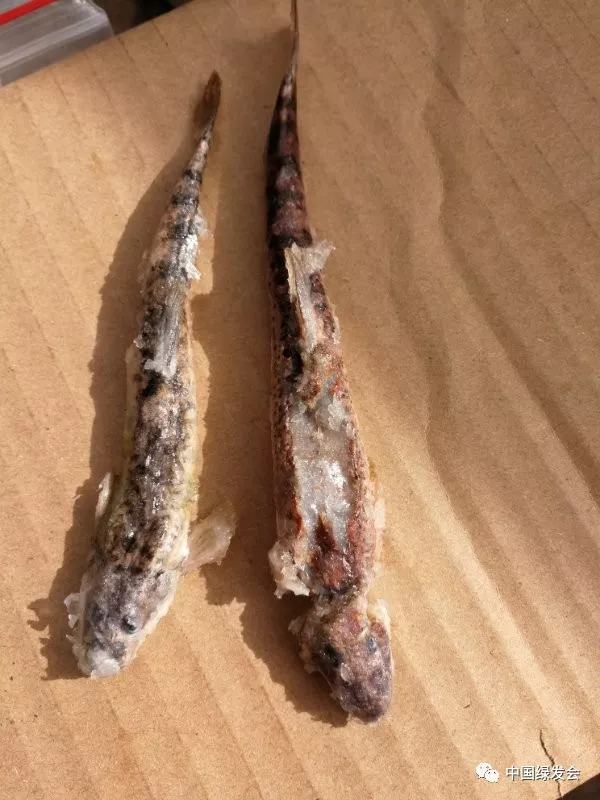
In the afternoon, the expedition team was wearing a sandstorm and once again crossed the storm eye, witnessed the tragic and terrible scene of the lakeside sediments being eroded by the wind, and were also personally affected by the sky above the lake which was like the end of the world: the endless long yellow sand belt, the thick dust accumulation on the ice, and the dust that migrated downstream with the wind, all make people sigh while deeply worry about this new ecological change in the hinterland of the Qinghai-Tibet Plateau…
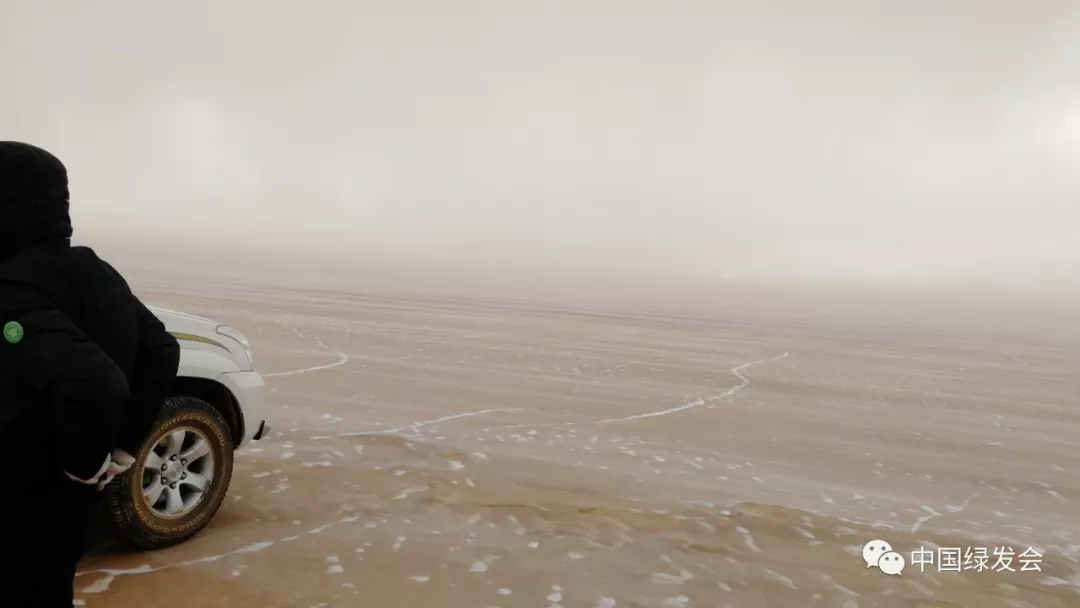
(Photo credit: the expedition team members)
Orginal Chinese article:
http://www.cbcgdf.org/NewsShow/4854/7400.html
By / Niu Jingmei
